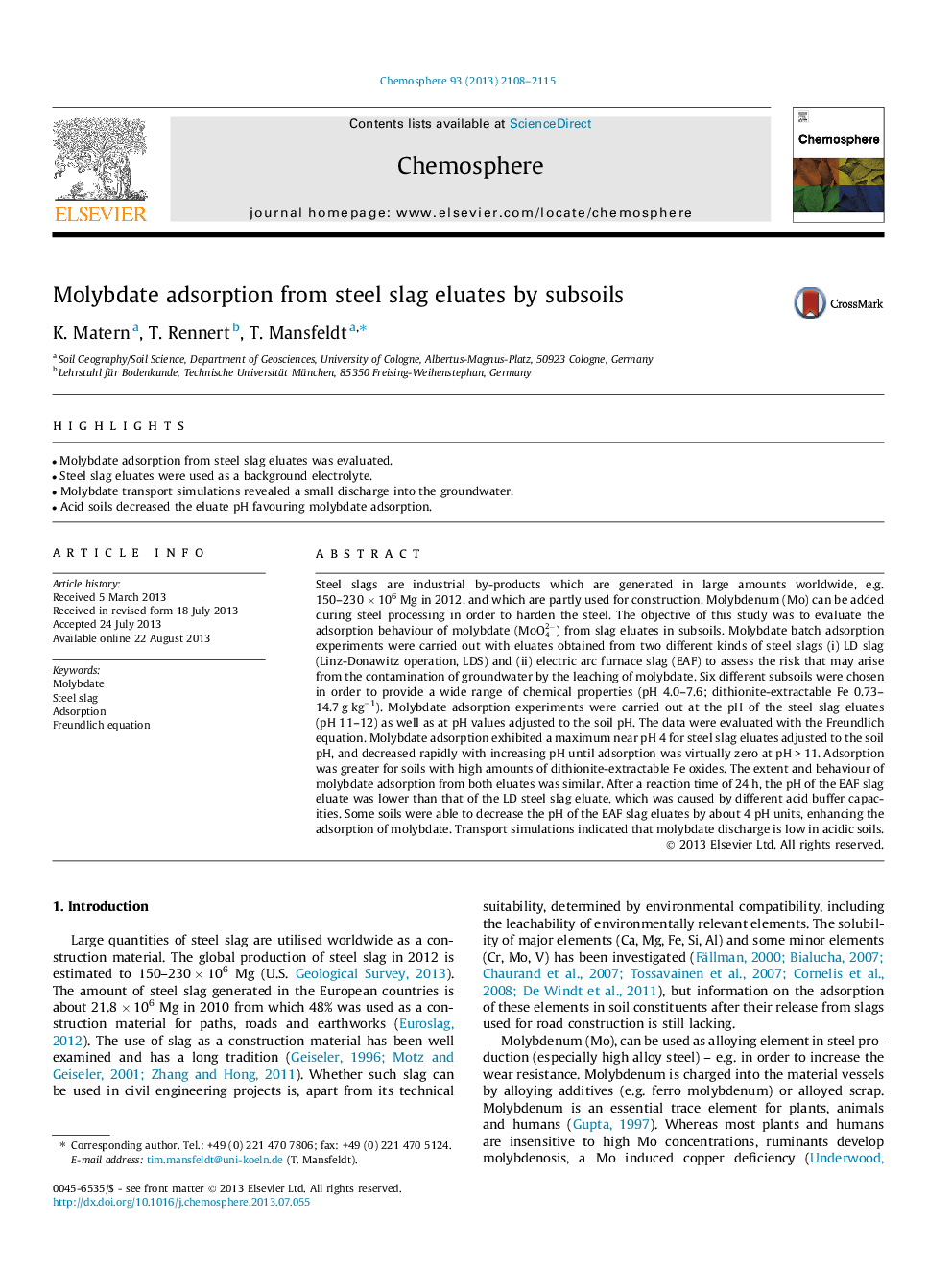| Article ID | Journal | Published Year | Pages | File Type |
|---|---|---|---|---|
| 6310195 | Chemosphere | 2013 | 8 Pages |
â¢Molybdate adsorption from steel slag eluates was evaluated.â¢Steel slag eluates were used as a background electrolyte.â¢Molybdate transport simulations revealed a small discharge into the groundwater.â¢Acid soils decreased the eluate pH favouring molybdate adsorption.
Steel slags are industrial by-products which are generated in large amounts worldwide, e.g. 150-230 Ã 106 Mg in 2012, and which are partly used for construction. Molybdenum (Mo) can be added during steel processing in order to harden the steel. The objective of this study was to evaluate the adsorption behaviour of molybdate (MoO42-) from slag eluates in subsoils. Molybdate batch adsorption experiments were carried out with eluates obtained from two different kinds of steel slags (i) LD slag (Linz-Donawitz operation, LDS) and (ii) electric arc furnace slag (EAF) to assess the risk that may arise from the contamination of groundwater by the leaching of molybdate. Six different subsoils were chosen in order to provide a wide range of chemical properties (pH 4.0-7.6; dithionite-extractable Fe 0.73-14.7 g kgâ1). Molybdate adsorption experiments were carried out at the pH of the steel slag eluates (pH 11-12) as well as at pH values adjusted to the soil pH. The data were evaluated with the Freundlich equation. Molybdate adsorption exhibited a maximum near pH 4 for steel slag eluates adjusted to the soil pH, and decreased rapidly with increasing pH until adsorption was virtually zero at pH > 11. Adsorption was greater for soils with high amounts of dithionite-extractable Fe oxides. The extent and behaviour of molybdate adsorption from both eluates was similar. After a reaction time of 24 h, the pH of the EAF slag eluate was lower than that of the LD steel slag eluate, which was caused by different acid buffer capacities. Some soils were able to decrease the pH of the EAF slag eluates by about 4 pH units, enhancing the adsorption of molybdate. Transport simulations indicated that molybdate discharge is low in acidic soils.
